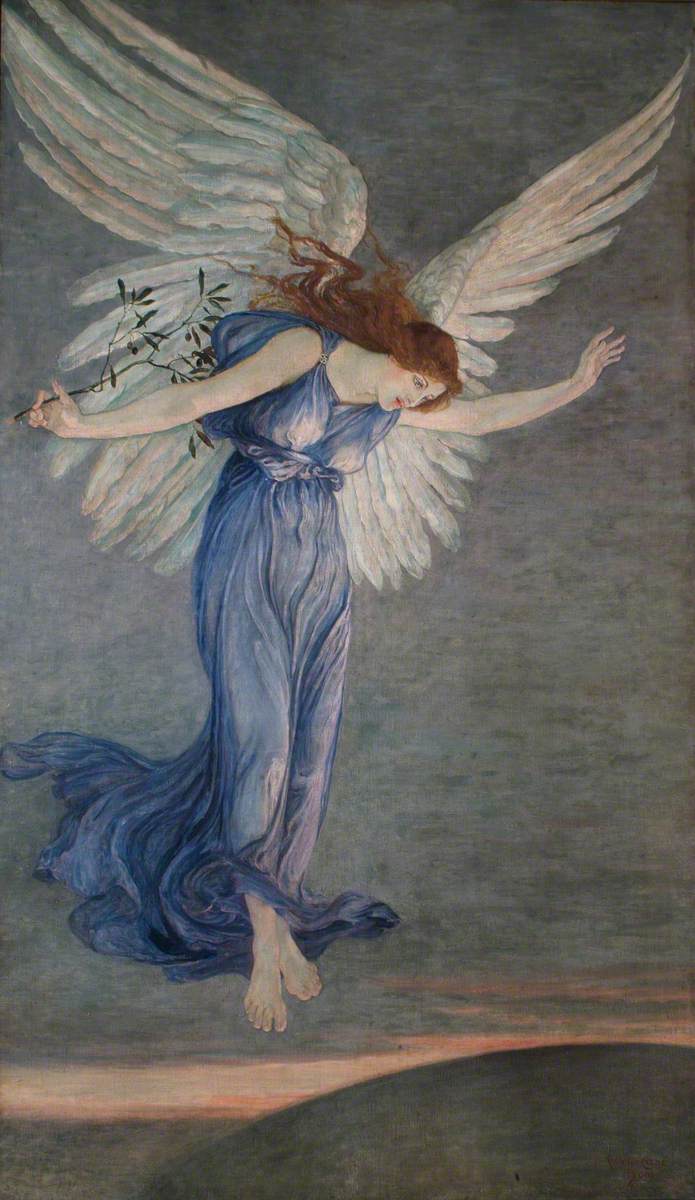Home » Tutti i post
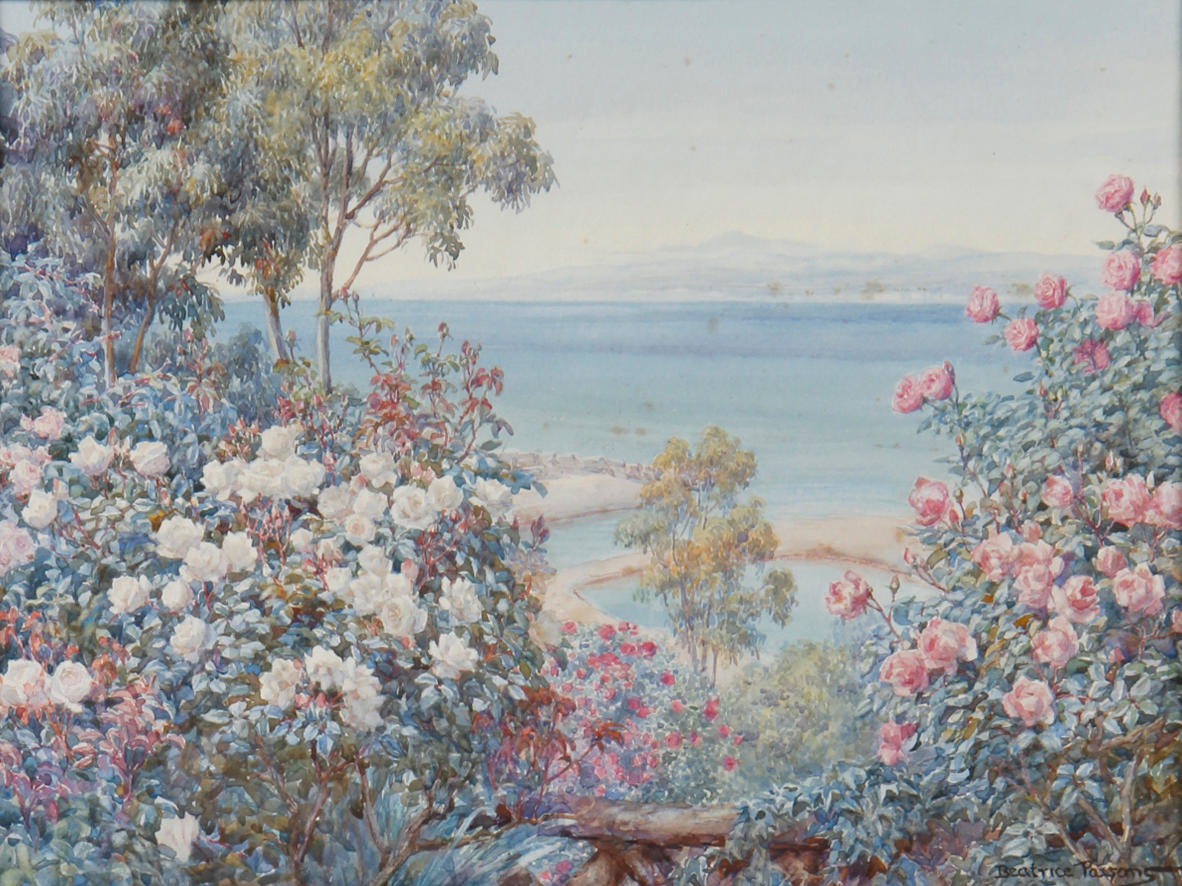
Beatrice Parsons | Garden painter
Beatrice Emma Parsons (1870–1955) was a British painter and is best known for her watercolours of garden subjects. Parsons, along with George Samuel Elgood and Ernest Arthur Rowe, is considered one of the leading English painters of gardens.
Parsons was born in Peckham, South London, England in 1870.
She was sister to Karl Parsons, a stained-glass artist, who commemorated their family in a stained-glass window in St. Matthew's Church, Oxhey.
Parsons attended the Haberdashers' Aske's School for Girls and studied at King's College London, before attending the Royal Academy Schools, where she won three prizes.

Pierre-Auguste Renoir at the Museum Barberini
Pierre-Auguste Renoir | The Pear Tree, 1877
In the early 1860s Pierre-Auguste Renoir had studied in the Paris atelier of Swiss history painter Charles Gleyre.
Together with his fellow pupils Frédéric Bazille, Claude Monet and Alfred Sisley, he belonged to the nucleus of the group that would become known as Impressionists in the mid-1870s.
Renoir’s early experiments with painting in the open air were decisive for the development of his visual language. In a departure from traditional methods, he worked en plein air not merely for studies, but also, like Monet, in order to create independent, finished works.
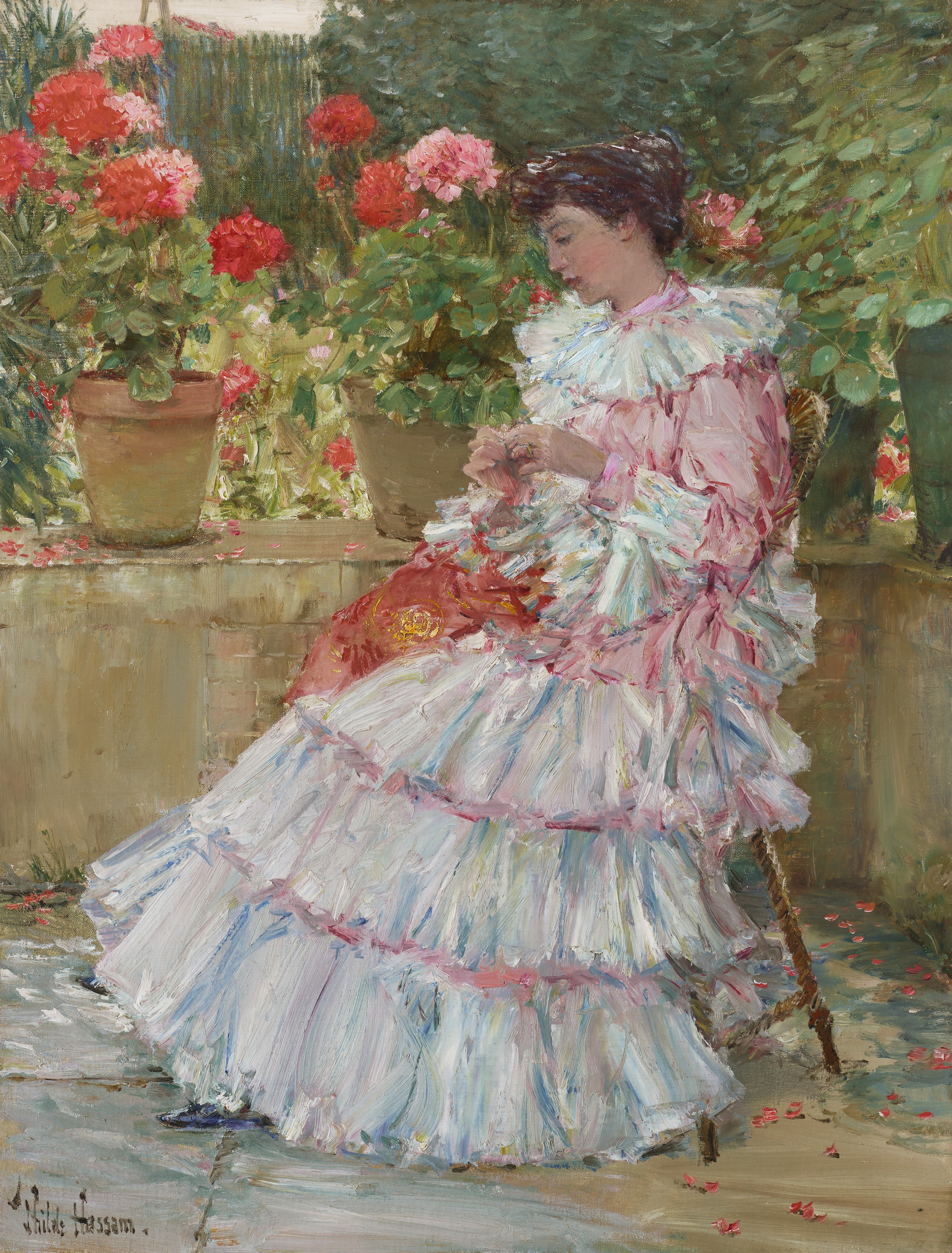
Childe Hassam | Geraniums, 1888-1889
From: Christie's
Following a successful career in Boston, in 1886 the celebrated American Impressionist Childe Hassam (1859-1935) journeyed to Paris with his wife Maud where he would remain until 1889.
During this time in the summer months, the Hassams visited the country home of German businessman Ernest Blumenthal and his wife, who was friends with Mrs. Hassam, in Villiers-Le-Bel, a small town ten miles northeast of Paris in the Val d’Oise.

Sandro Botticelli
At the height of his fame, the Florentine painter and draughtsman Sandro Botticelli (1445-1510) was one of the most esteemed artists in Italy.
His graceful pictures of the Madonna and Child, his altarpieces and his life-size mythological paintings, such as 'Venus and Mars', were immensely popular in his lifetime.
The son of a tanner, he was born Alessandro di Mariano Filipepi, but he was given the nickname 'Botticelli' (derived from the word 'botticello' meaning 'small wine cask').

Marie Laurencin | Pittrice cubista
Nel 1907 espose per la prima volta al Salon des Indépendants.
Nello stesso anno Picasso le fece conoscere Guillaume Apollinaire.
Da questo incontro nacque un legame passionale e tumultuoso che durò fino al 1912.
Nel 1914 sposò il barone Otto von Wätjen. La coppia si spostò in Spagna dopo la dichiarazione di guerra, prima a Madrid e poi a Barcellona.
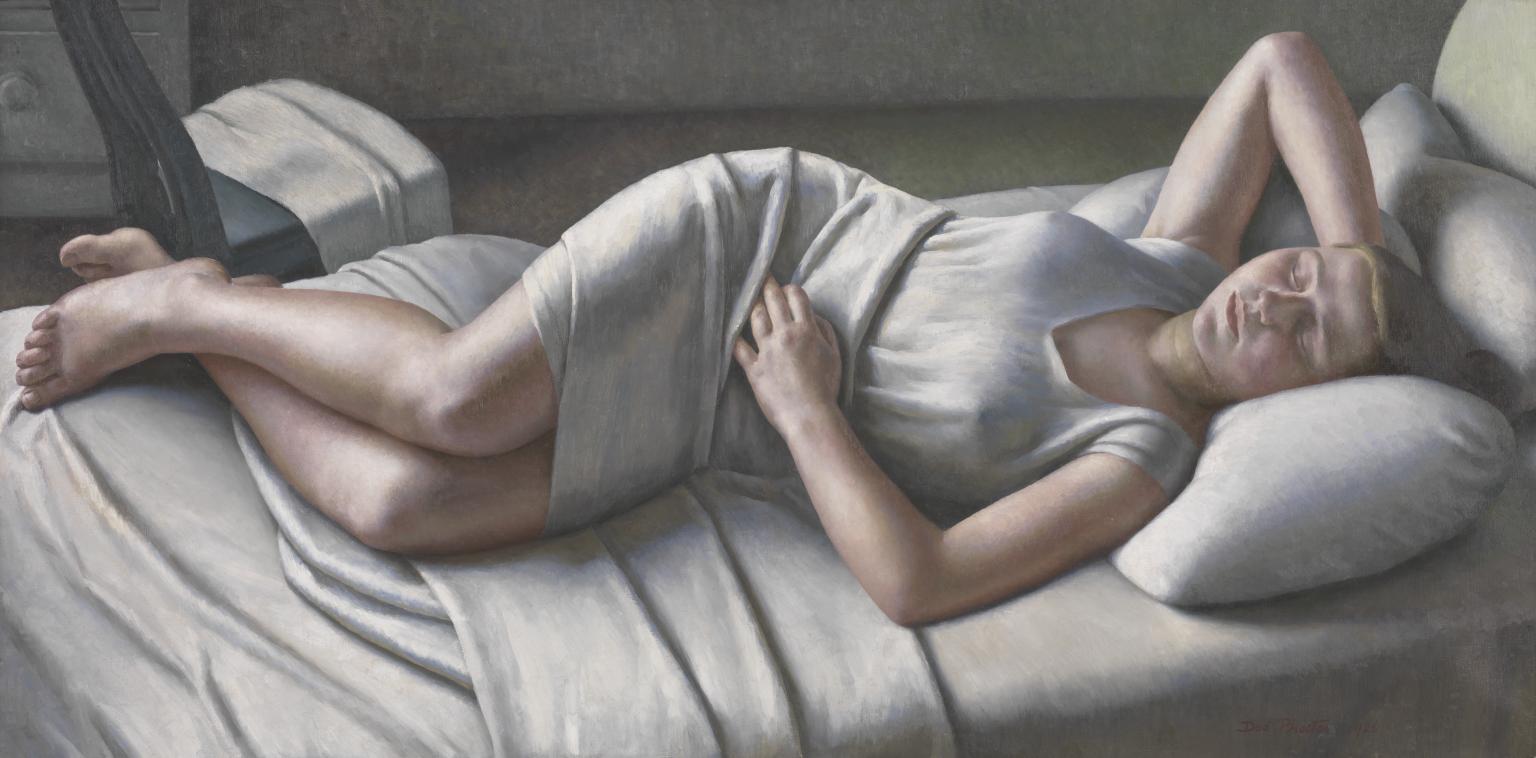
Dod Procter | Morning, 1926 | Tate
In 1922, Dod Procter (British painter, 1890-1972) began to paint a series of simple, monumental portraits of young women that she knew.
Emphasising the fall of light across the figures, Proctor gave them a powerful presence.
This painting features Cissie Barnes, the sixteen-year-old daughter of a fisherman from Newlyn in Cornwall.
This village was home to Procter for most of her working life.
This painting was voted 'Picture of the Year' at the 1927 Summer Exhibition, a yearly show at the Royal Academy in London.
It was bought for the nation by the Daily Mail newspaper.
The popularity of the painting led to its being displayed in New York, followed by a tour of Britain.
Dod Procter | Morning, 1926 | Tate

Wisława Szymborska | The End and the Beginning / La Fine e l'Inizio
Dopo ogni guerra
c'è chi deve ripulire.
In fondo un po' d'ordine
da solo non si fa.
C'è chi deve spingere le macerie
ai bordi delle strade
per far passare
i carri pieni di cadaveri.
Pablo Picasso | Guernica, 1937 | Museo Nacional Centro de Arte Reina Sofía, Madrid
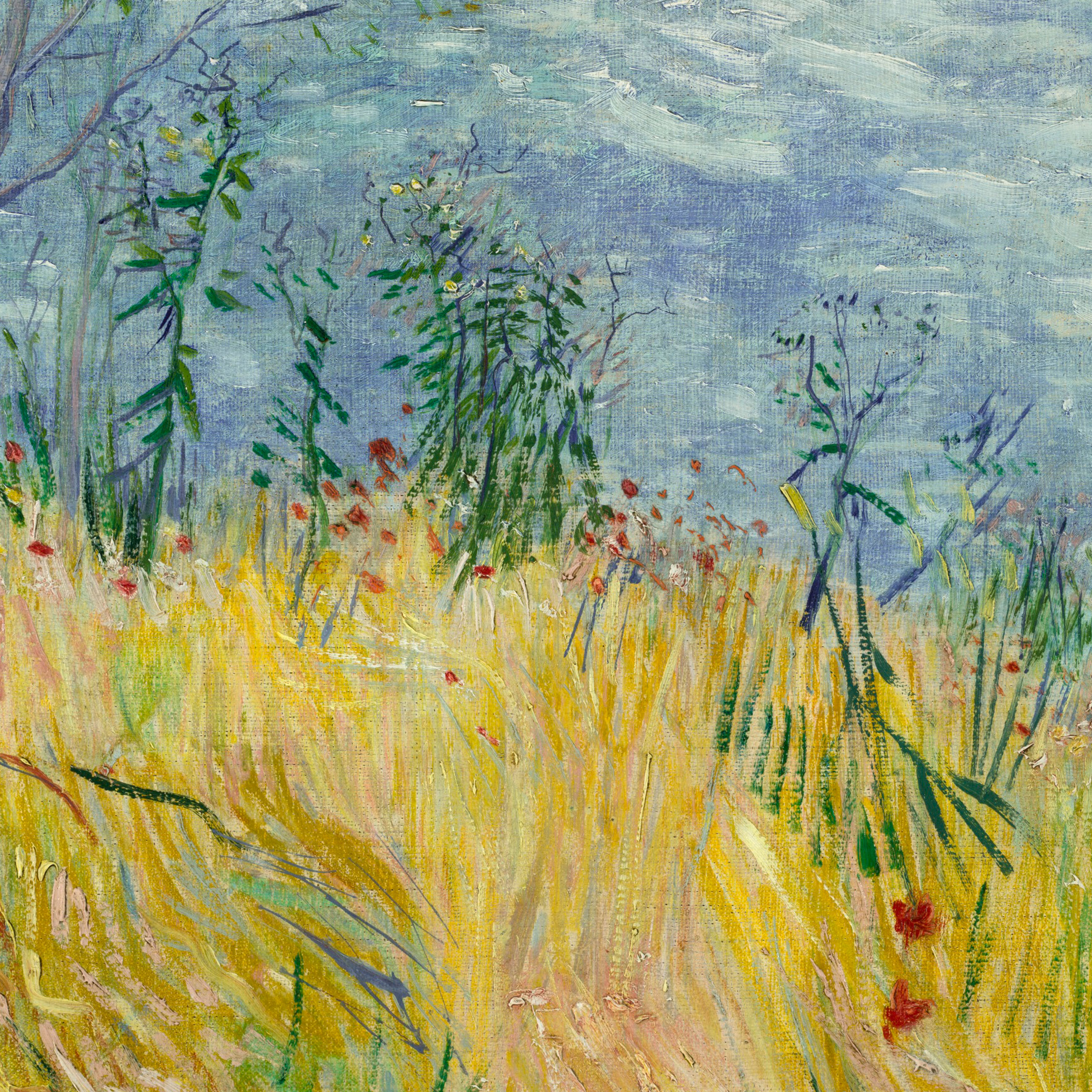
Vincent van Gogh | Edge of a Wheat Field with Poppies, 1887
From: Denver Art Museum
Edge of a Wheat Field with Poppies, made in the summer of 1887, gives a sense of the many influences van Gogh was exposed to during his first year in the "hotbed of ideas" [as he called Paris in a letter to his sister].
The small painting captivates us with its bright contrast between the orange yellow of the field and the complementary radiant blue of the sky, the dark green of the new shoots coming up and the vivid vermillion of the poppies, sprinkled across the canvas in free dashes.
The vertical space is evenly divided between earth and sky. The vantage point is surprisingly low to the ground; we look at the scene as though up a hill.
This is not the vast expanse of field shown in Caillebotte’s painting or van Gogh’s later landscapes, but a detail - a highly fragmented view. A slender poplar arcs along the left edge of the painting, and clusters of budding stalks seem to dance on the horizon line.
Vincent van Gogh | Edge of a Wheat Field with Poppies, 1887 | Denver Art Museum
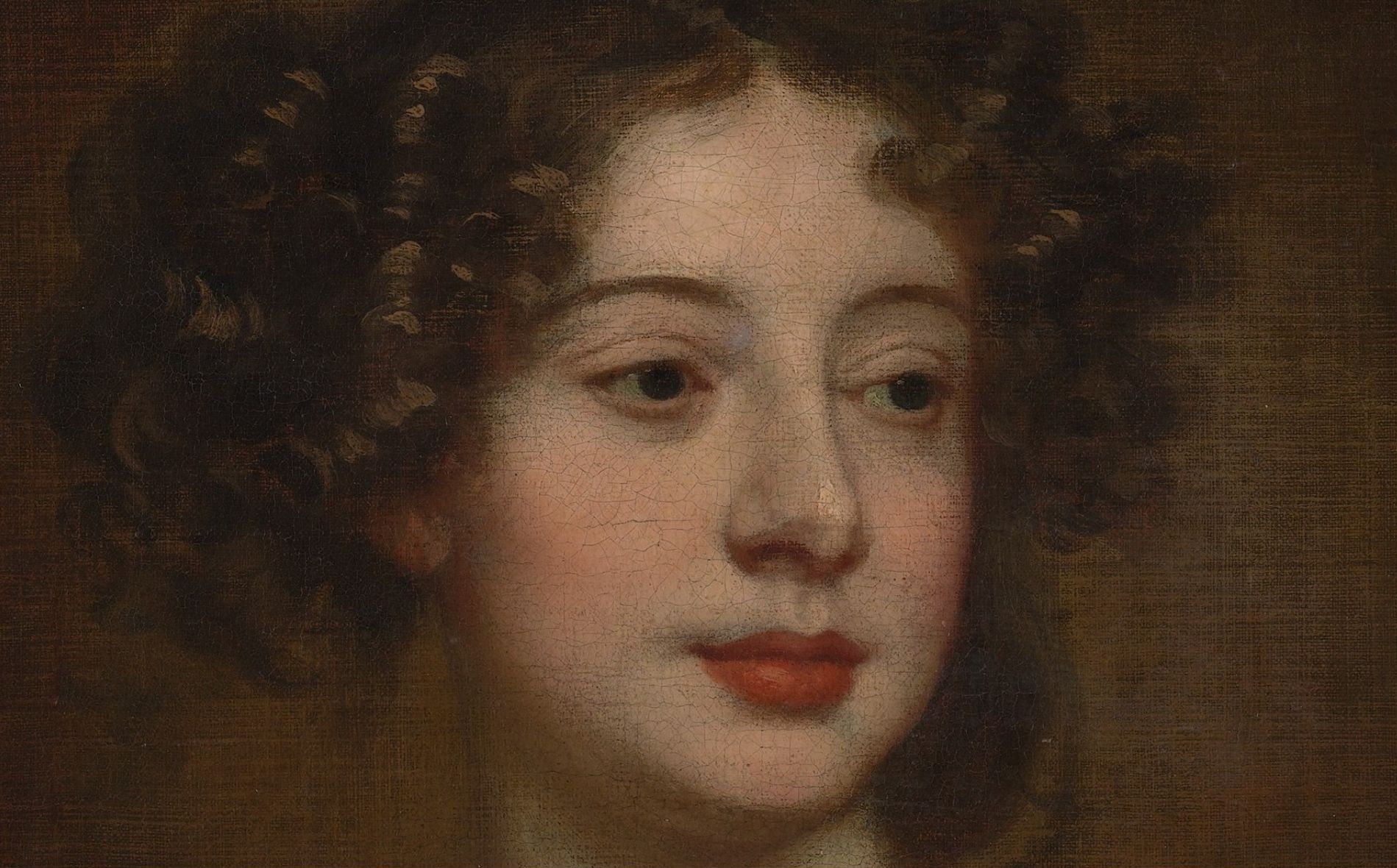
Sir Peter Lely | Study for a Portrait of a Woman, 1670
From: Metropolitan Museum of Art
This sketch provides a good example of Sir Peter Lely’s (Dutch-born English Baroque Era Painter, 1618-1680) working method, as one of the most successful portraitists in England in the second half of the seventeenth century.
Following the example of Van Dyck, Lely painted only the sitter’s head in his or her presence, sometimes laying in an outline for the pose and costume.

Camille Pissarro at the Museum Barberini
Camille Pissarro | Boulevard Montmartre, Twilight, 1897
In a series of fourteen paintings Camille Pissarro focused on the Boulevard Montmartre in the center of Paris.
From his room in the Grand Hôtel de Russie, with the opera building behind him, he had a view of the busy street on which twenty thousand carriages rattled by every day, past the expensive shops and the popular Café Tortoni.
This picture shows the boulevard with fresh green trees in springtime. | Source: © Museum Barberini

Ingrid Tusell, 1978 | Pittrice surrealista
Ingrid Tusell è un'artista nata a Barcellona ed ora vive in un vecchio mulino restaurato nel terreno montuoso di Teruel, in Spagna.
Ingrid dipinge donne che ricordano le forti guerriere indigene.
Il loro sguardo congelato e intenso permea un senso di conoscenza "ultraterrena" e di energia universale femminile.
Spesso crivellati di vita animale e vegetale, i soggetti femminili di Ingrid si fondono all'interno dei loro ambienti consentendo loro di avere una connessione simbiotica con la natura.

Dorothy Johnstone | Modern painter
Dorothy Johnstone (1892-1980) è stata una pittrice ed acquerellista Scozzese.
Johnstone è nata ad Edimburgo nel 1892 ed è cresciuta a Napier Road, vicino alla Gothic Mansion, Rockville.
Suo padre, il paesaggista George Whitton Johnstone RSA (1849-1901), incoraggiò il suo talento artistico ed all'età di 16 anni si iscrisse come studentessa all'Edinburgh College of Art.
Ha frequentato un corso con Ernest Stephen Lumsden dove ha rivelato il suo talento nella ritrattistica informale, un genere per il quale è diventata famosa.
Nel 1914 divenne membro del personale dell'Edinburgh College of Art.

Pierre-Auguste Renoir | Champ de bananiers, 1881
Starting in 1881 the art dealer Paul Durand-Ruel regularly bought paintings from Pierre-Auguste Renoir.
The painter then undertook all the trips he had previously been unable to afford and which would complete his artistic training.
His first trip took him to Algeria, in the footsteps of Delacroix whom he admired. Renoir's visual experience there was as intense as it had been for the older artist.
Seduced by the colours and the "incredible wealth" of nature here, he produced several pure landscapes, quite rare in his oeuvre.
This field of banana trees is in the Essai garden in Hamma, created in 1832 in Algiers.
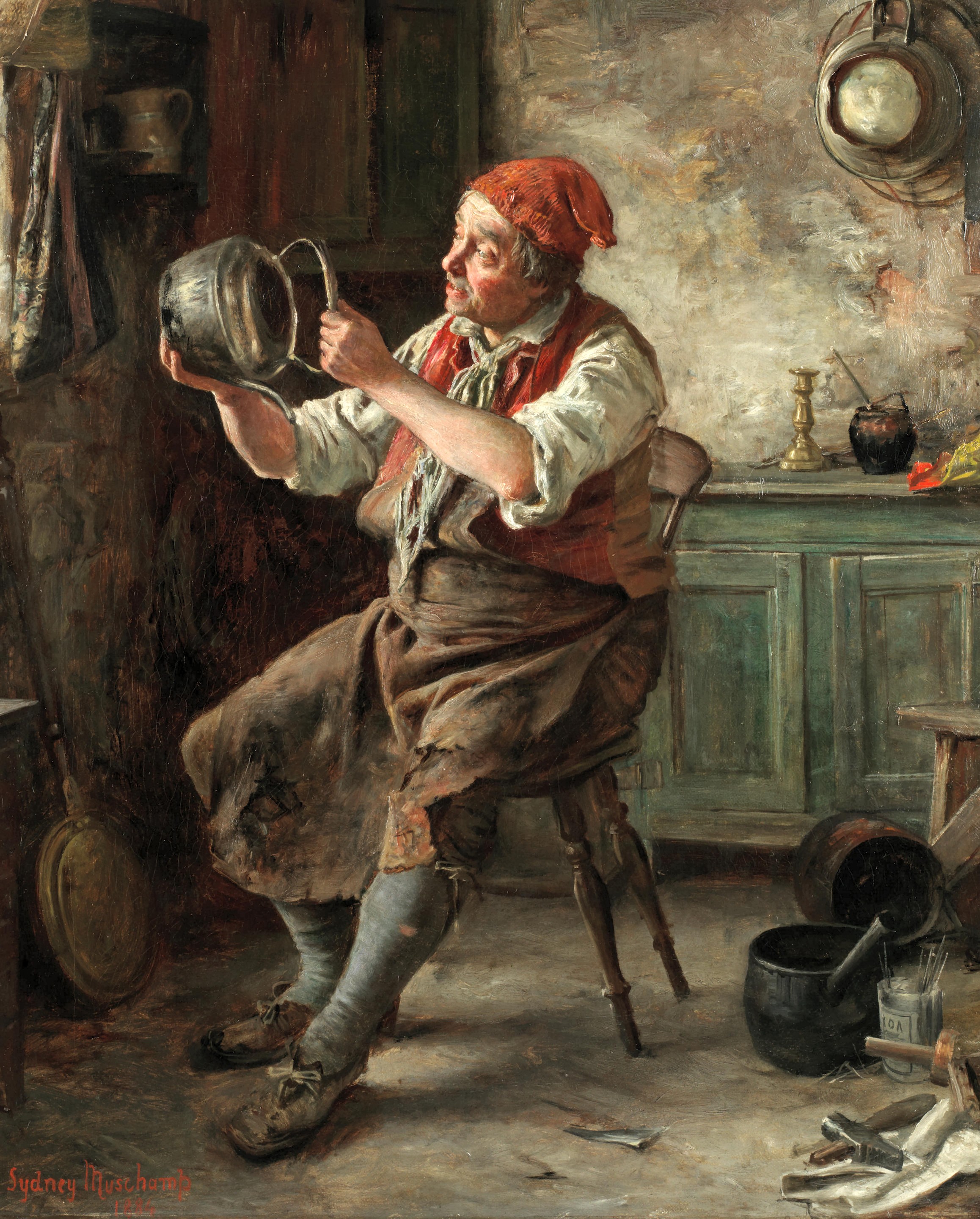
Francis Sydney Muschamp | Pittore di genere
Francis Sydney Muschamp was an British painter, the son of the landscape painter, Francis Muschamp (active 1865-1881).
The family moved to London in 1865, the year that Muschamp Sr. began to exhibit at the Royal Society of British Artists.
The younger Muschamp began to exhibit at the Royal Society of British Artists in 1870 and continued to exhibit his paintings at the major halls until 1903.
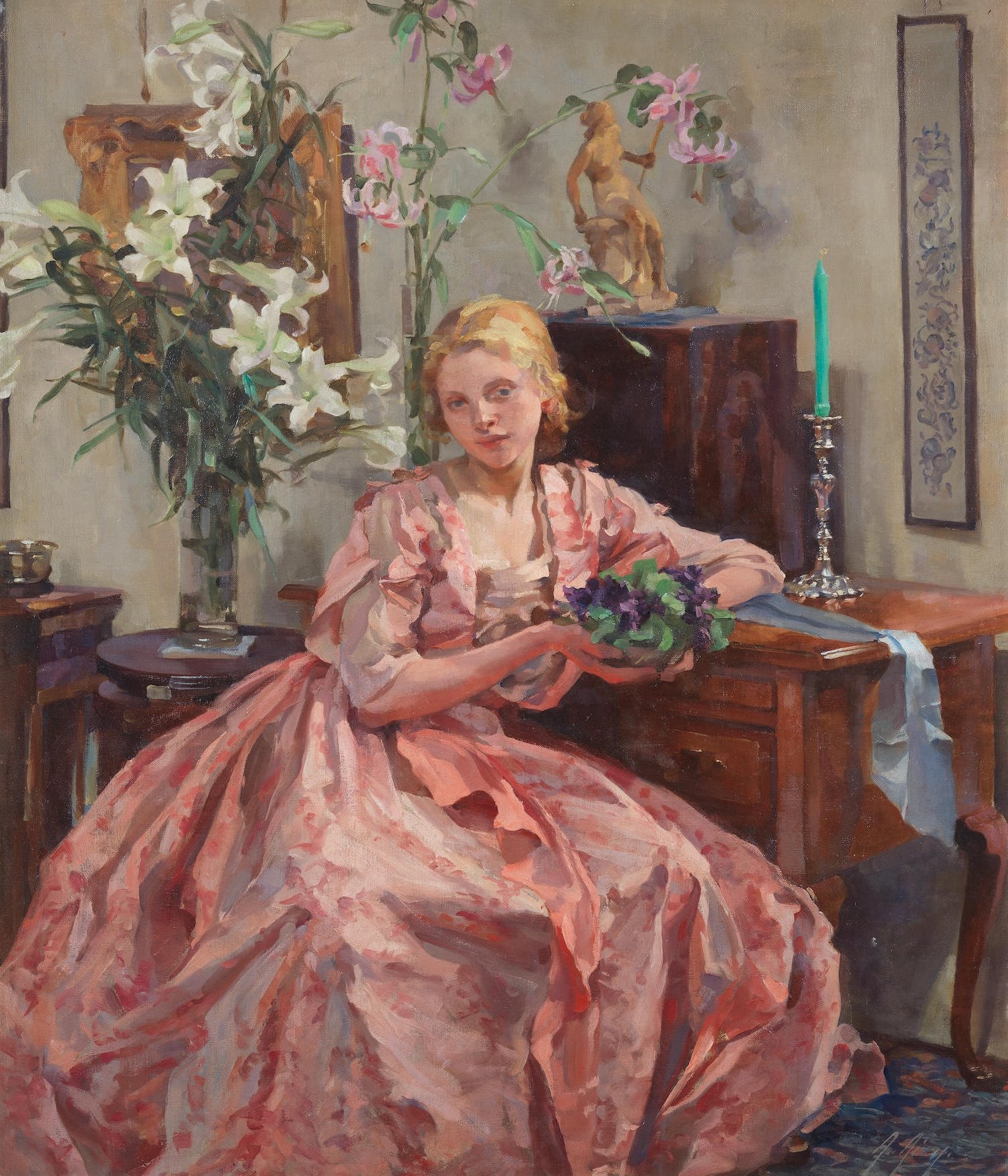
Anna Airy | War artist
Anna Airy (6 June 1882 - 23 October 1964) was an British oil painter, pastel artist and etcher. She was one of the first women officially commissioned as a war artist and was recognised as one of the leading women artists of her generation.
Early life
Airy was born in Greenwich, London, the daughter of an engineer, Wilfrid Airy, and Anna née Listing, and the granddaughter of the Astronomer Royal George Biddell Airy.
Airy trained at the Slade School of Fine Art in London from 1899-1903, where she studied alongside William Orpen and Augustus John, and under Fred Brown, Henry Tonks and Philip Wilson Steer.

Maximilian Lenz | Pittore della Secessione Viennese
Maximilian Lenz (Vienna, 1860-1948) è stato un pittore, grafico e scultore Austriaco. Fu membro fondatore della Secessione di Vienna; durante il periodo più importante della sua carriera fu simbolista, ma in seguito il suo lavoro divenne sempre più naturalistico.
Ha lavorato in una varietà di media, inclusi oli, acquerelli, litografia e rilievi in metallo.

Thomas Dewing | Lady in Yellow, 1888
Thomas Wilmer Dewing (1851-1938) created a striking contrast between the precisely modeled face and arms, and the very free, feathery brushstrokes of the dress.
The painting was exhibited in 1888 at the Boston Art Club, where it was purchased by Isabella Stewart Gardner with the help of Dennis Miller Bunker.
The painting was then exhibited to considerable acclaim at the National Academy of Design and at the Paris Universal Exposition of 1889.
Stanford White designed the frame, which is original to the painting. Mrs. Gardner hung the painting in the Yellow Room, a setting perfectly attuned to the hue of the woman’s dress. | Source: Isabella Stewart Gardner Museum
Thomas Wilmer Dewing | Lady in Yellow, 1888 | Isabella Stewart Gardner Museum
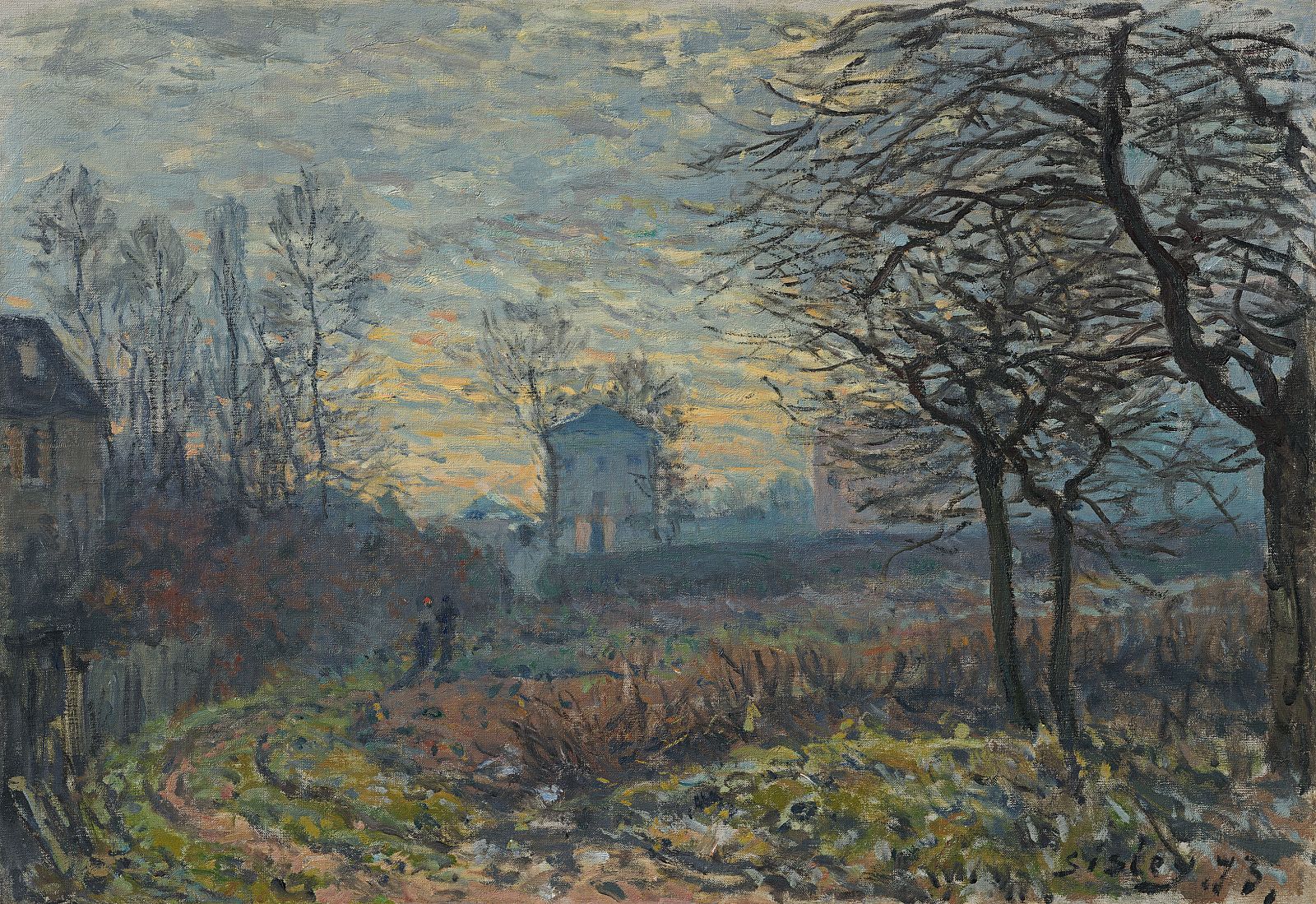
Alfred Sisley at the Museum Barberini
Located in Potsdam’s historic center (Germany), the Museum Barberini is an art museum that was initiated by Hasso Plattner, the founder of the German software company SAP and a patron of the arts.
Since its opening in 2017, the Barberini has established itself as one of the most popular museums in Germany with international exhibitions and an extraordinary collection of Impressionist paintings.
From Pablo Picasso, Vincent van Gogh, Rembrandt van Rijn, and Gerhard Richter to ancient sculpture, French Impressionism and Baroque painting, the Museum Barberini embraces all styles and eras, and aims to continually offer new perspectives on art.
Alfred Sisley | Near Moret-sur-Loing, 1881 | Museum Barberini
In 1882 Alfred Sisley moved to Moret-sur-Loing, a town to the south of Paris, where he explored the landscape that was crisscrossed by rivers and canals.
The wooden construction in the foreground likely belongs to one of the boatyards that dotted the Loing Canal, which was used for industrial purposes.
The detail of this construction adds a modern element to the timeless scenery.

Élisabeth Sonrel | Art Nouveau painter
Elisabeth Sonrel (1874-1953) was a French painter and illustrator in the Art Nouveau style.
Her works included allegorical subjects, mysticism, symbolism, portraits and landscapes.
She was the daughter of Nicolas Stéphane Sonrel, a painter from Tours, and received her early training from him.
For further study she went on to Paris as a student of Jules Lefebvre at the Ecole des Beaux-Arts.

Herbert Arnould Olivier (British, 1861-1952)
Herbert Arnould Olivier, R.I. was a British artist, best known for his portrait and landscape paintings. He was an uncle of Laurence Olivier.
Olivier was born in Battle, East Sussex, England, where his father Henry Arnould Olivier was a clergyman. His brothers were Henry (1850–1935), who had a military career, ending as a colonel; Sydney (the father of Noël and Daphne), who became Governor of Jamaica and later Secretary of State for India; and Gerard (1869-1939), a clergyman (the father of Laurence Olivier). He also had four sisters.
Olivier was educated between 1875-1877 at Sherborne School, a public school in Dorset and in 1922 gave his painting Easter Morn to the school.

Gottfrid Kallstenius (1861-1943)
Gottfrid Samuel Nikolaus Kallstenius (Nacka, 13 luglio 1861 - Nacka, 26 maggio 1943) è stato un pittore Svedese.
Gottfrid Kallstenius è nato a Västervik, in Svezia. Suo fratello Evald Gustaf Götrik Kallstenius (nato nel 1868) era un zoologo e membro della sfortunata spedizione Björling–Kallstenius.
Dopo gli studi preparatori con Edvard Perséus, fu ammesso alla Royal Swedish Academy of Fine Arts nel 1884 e si laureò nel 1888, dopo aver ricevuto due medaglie per il suo lavoro.
Nel 1891 sposò la pittrice Gerda Roosval. Poco dopo gli fu assegnata una borsa di studio di viaggio e trascorsero un'estate a Parigi, completando i loro studi.

Antanas Žmuidzinavičius (1876-1966)
Antanas Žmuidzinavičius (31 October 1876 - 9 August 1966) was a Lithuanian painter and art collector.
Educated at the Veiveriai Teachers' Seminary, Žmuidzinavičius worked as a teacher while pursuing art education in the evenings in Warsaw.
He further studied at the Académie Colarossi and Académie Vitti in Paris.
In 1906, he returned to Lithuania and organized the First Exhibition of Lithuanian Art and the Lithuanian Art Society which he chaired.
He also established the Vilnius Art Society which united artists of different nationalities.
In 1908-1909 and 1921-1924, he toured western Europe and the United States.

Stikki Peaches | Street art
Canadian artist Stikki Peaches, is renown for having his work spotted around the world and also known for employing techniques through the uses of acrylic paint, collage and silk screens he covers international landscapes with his pop-culture references and lowbrow street art.
Stikki Peaches’ works are featured in the URBAN NATION 2018 exhibition, ‘UN-DERSTAND The Power of Art as a Social Architect’.
From his early stages in 2008, his tagline, “What If Art Ruled The World?” has captivated the public in contemplation and in awe of his unique skill and nostalgic street art.
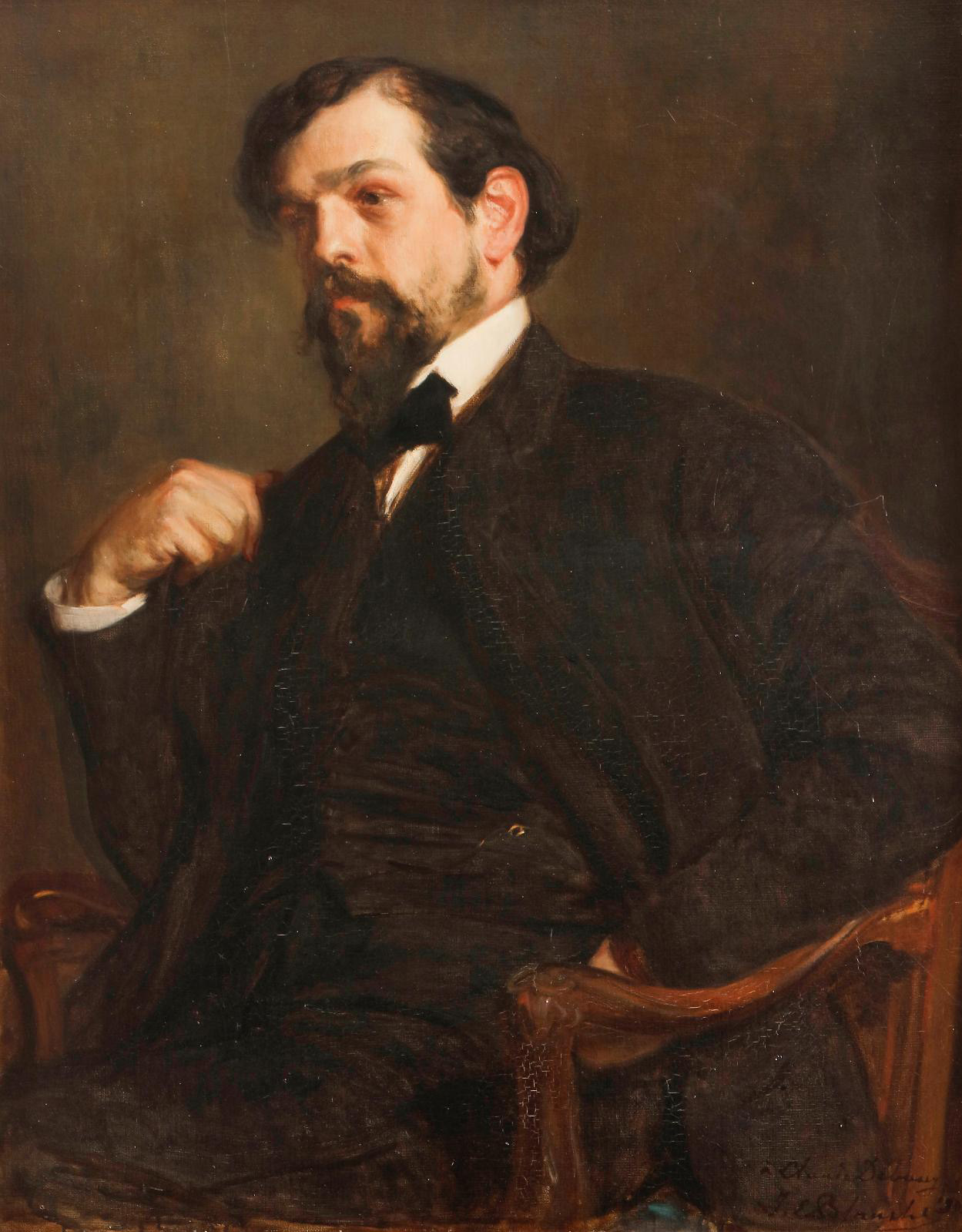
Claude Debussy: "Music is the space between the notes"!
(Achille) Claude Debussy (22 August 1862 – 25 March 1918) was a French composer. He is sometimes seen as the first Impressionist composer, although he vigorously rejected the term.
He was among the most influential composers of the late 19th and early 20th centuries.
Born to a family of modest means and little cultural involvement, Debussy showed enough musical talent to be admitted at the age of ten to France's leading music college, the Conservatoire de Paris.
He originally studied the piano, but found his vocation in innovative composition, despite the disapproval of the Conservatoire's conservative professors.
He took many years to develop his mature style, and was nearly 40 when he achieved international fame in 1902 with the only opera he completed, Pelléas et Mélisande.
Jacques-Émile Blanche (1861-1942) | Claude Debussy, 1902

Wassily Kandinsky: "Il colore è un potere che influenza direttamente l'anima"!
• "Il colore è il tasto, l'occhio il martelletto, l'anima il pianoforte dalle molte corde.
L'artista è una mano che toccando questo o quel tasto mette in vibrazione l'anima umana".
• "Colour is the keyboard, the eyes are the hammers, the soul is the piano with many strings.
The artist is the hand that plays, touching one key or another purposively, to cause vibrations in the soul".
• "A parallel between color and music can only be relative - just as a violin can give warm shades of tone, so yellow has shades, which can be expressed by various instruments".
• "In generale il colore è un mezzo che consente di esercitare un influsso diretto sull'anima".
.jpg)
Martha Graham: "La danza è un canto del corpo, sia esso di gioia o di pena"!
• "I più grandi ballerini non sono grandi per il loro livello tecnico, sono grandi per la loro passione".
• "Le nostre braccia hanno origine dalla schiena perché un tempo erano ali".
• "Non danziamo con i piedi: danziamo con le ovaie, con l’utero, e con tutto il corpo e l’anima".
• "Io non volevo essere un albero, un fiore o un’onda. Nel corpo di una danzatrice noi, in quanto pubblico, dobbiamo vedere noi stessi, non l’imitazione del comportamento, delle azioni di ogni giorno; non fenomeni della natura, non creature esotiche di un altro pianeta: ma qualcosa, una piccola cosa di quel miracolo che è l’essere umano".

Dalai Lama: 18 principi della felicità
1. Tieni sempre conto del fatto che un grande amore e dei grande risultati comportano un grande rischio.
2. Quando perdi, non perdere la lezione.
3. Segui sempre le tre "R": Rispetto per te stesso, Rispetto per gli altri, Responsabilità per le tue azioni.
4. Ricorda che non ottenere quel che si vuole può essere talvolta un meraviglioso colpo di fortuna.
5. Impara le regole, affinché tu possa infrangerle in modo appropriato.
.jpg)
Fredric Michael Wood, 1944 | Pittore impressionista
Fredric Michael Wood: "Art first came to my attention in a serious way as a boy fortunate to spend many of my formative years in Europe while we were stationed there as a military family.
I was hooked when I discovered an old impressionist oil painting, in a storeroom in our house overseas, of the French countryside, and I stared at it for a long long time trying to imagine how one could paint such a scene! I resolved to get beyond my little drawings and watercolors, and learn to paint like that!
Thanks to childhood, naiveté, I didn't know then how difficult that would be, when, later, much later, I would discover great artists of the past such as John S. Sargent, Joaquin Sorolla, Anders Zorn, and Frank Tenney Johnson, along with illustrators like Howard Pyle and others from the Golden Age of Illustration", as well as contemporary artists, Andrew Wyeth, and John Asarro, and so many others of my contemporaries, whose work would compel, but challenge me so"!
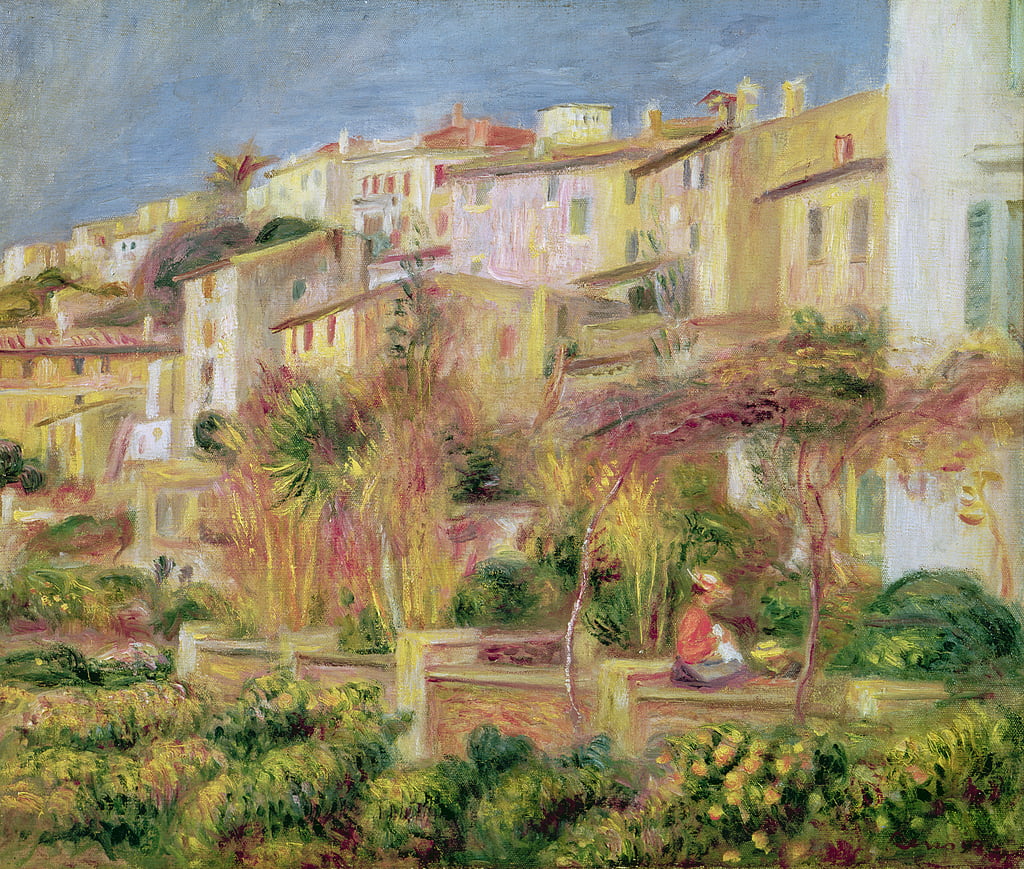
Pierre-Auguste Renoir | Terrace at Cagnes, 1905
Suffering from severe rheumatism late in life, Renoir often visited Cagnes, a town in southern France. He rented an apartment in the Maison de La Poste (post office building) and lived there from 1903 to 1907.
We see that building on the right side of this painting. Renoir could view the streets of Cagnes and its orchards from a window in his apartment.
This painting presents, in limpid brushwork, the houses and orchards arranged stepwise on the hill.
The woman seated on the wall is wearing a white hat and a red jacket.
Beside her is a child in a straw hat. | Source: © Artizon Museum, Ishibashi Foundation
Pierre-Auguste Renoir | Terrace at Cagnes, 1905 | Bridgestone Museum of Art

Pierre-Auguste Renoir | Lise - La femme a l'ombrelle, 1867
Lise, also known as Lise - La femme à l'ombrelle, or Lise with a Parasol, is an oil-on-canvas painting by the French artist Pierre-Auguste Renoir, created in 1867 during his early Salon period.
The full-length painting depicts model Lise Tréhot posing in a forest.
She wears a white muslin dress and holds a black lace parasol to shade her from the sunlight, which filters down through the leaves, contrasting her face in the shadow and her body in the light, highlighting her dress rather than her face.
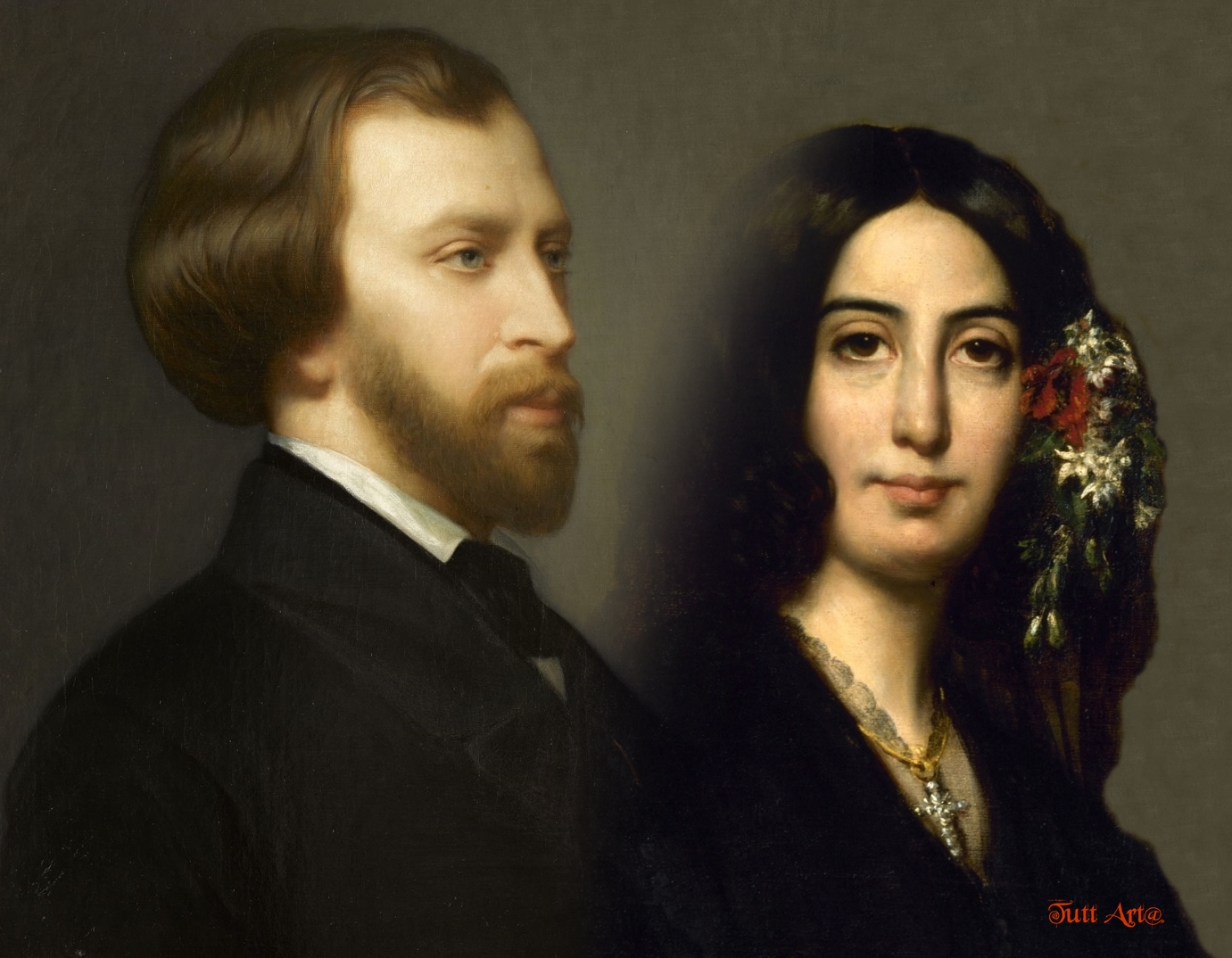
George Sand’s letter to Alfred de Musset
George Sand (Scrittrice e drammaturga Francese, 1804-1876) ed Alfred de Musset (Poeta, scrittore romantico e drammaturgo Francese, 1810-1857) si erano conosciuti nel giugno del 1833 presso amici comuni quando Musset, dopo aver letto Lélia, le scrisse di essere innamorato di lei.
Vivono una passione tormentata con picchi estremi di creatività che scandalizza le loro famiglie, gli amici e quanti sono loro accanto, costringendoli a lasciare Parigi per fare approdo in Italia, alla ricerca di un’impossibile felicità.
A dicembre partirono insieme per l'Italia: a Genova George Sand si ammalò di una malattia che trascinò fino a Venezia, dove alloggiarono dal 1º gennaio 1834: George passava a letto le sue giornate, curata dal giovane medico veneziano Pietro Pagello, mentre Musset passava le notti con alcune prostitute.
Tuttavia anche il poeta contrasse il tifo, che gli procurò febbre altissima ed allucinazioni e venne assistito da George e da Pagello, che intanto era divenuto amante della scrittrice.
George Sand and Alfred de Musset

Arthur Wasse | Genre painter
Arthur Cramer James Wasse (1854-1930) was born in Manchester in 1854, the son of John Angelo Wasse, a painter of miniature portraits. He started painting at an early age.
In 1875 Wasse was studying at the Manchester School of Art and, by the late 1870s, had exhibited work in London to good reviews.
He received several prizes when he was studying at the Munich school of painting.
After a short stint at the Royal Academy, Wasse returned to Munich, where he was entranced by southern Germany’s towns and landscapes and between 1875-1890 he travelled back and forth between Germany and England, running his own art school in London for a time.

Roberto Weigand, 1968 | Illustratore surrealista
Roberto Weigand è un illustratore di libri per bambini e designer di copertine di riviste in Brasile. Ha studiato Architettura all'Università di San Paolo e nel 1991 ha iniziato a lavorare come illustratore per giornali, riviste e libri per bambini.
Dal 1999 lavora come illustratore e Infografista per la rivista Veja, dal 2001 diventa responsabile delle copertine della rivista Istoé e dal 2002 inizia a scrivere per la rivista Publish.
Lavora essenzialmente con il computer, utilizzando diversi stili e tecniche per illustrare data la sua esperienza con la progettazione grafica e la fotomanipolazione.
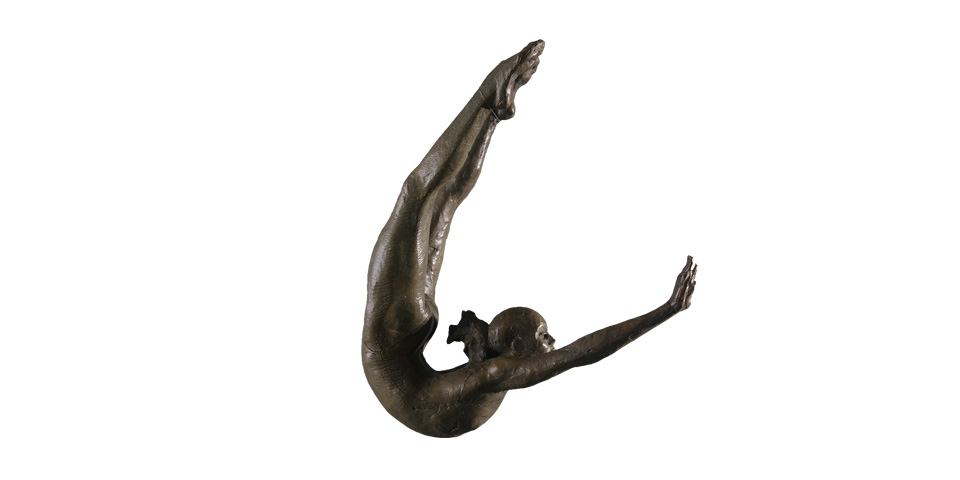
Max Leiva, 1966 | Scultore figurativo
Max Leiva, artista e scultore, si è diplomato all’Accademia di Belle Arti in Guatemala nel 1993.
Dal 1990 ha approfondito le sue capacità artistiche presso grandi scultori come Dagoberto Vasquez, con il quale ha successivamente collaborato nel 1998, perfezionando la tecnica della fusione in bronzo; la formazione accademica di Max Leiva è di fondamentale importanza per la sua produzione artistica.
Sin dal 1996 l’artista ha realizzato una serie di opere monumentali oggi situate in spazi pubblici, come ad esempio il monumento a “Pedro de Bethancourt” (2000), situato nell’aeroporto Boulevard Aurora (città del Guatemala), dedicato al primo Santo del Guatemala e del Centro America.


Marco Grassi, 1987 | Hyperrealist painter
Born in Reggio Emilia, Italian artist Marco Grassi still lives and works in his native city. He graduated from the Academy of Fine Arts in Bologna.
Marco chose to devote himself full time to painting, a passion that accompanies him since he was a child. Line quality and delicacy in the colors are fundamental aspects of his painting.
Fascinated by the changes of body and personality, he tries to reinterpret the human forms through metamorphosis and other contamination. His first solo exhibition was held in his hometown, Reggio Emilia, in December 2013 at the old Palazzo Calcagni.
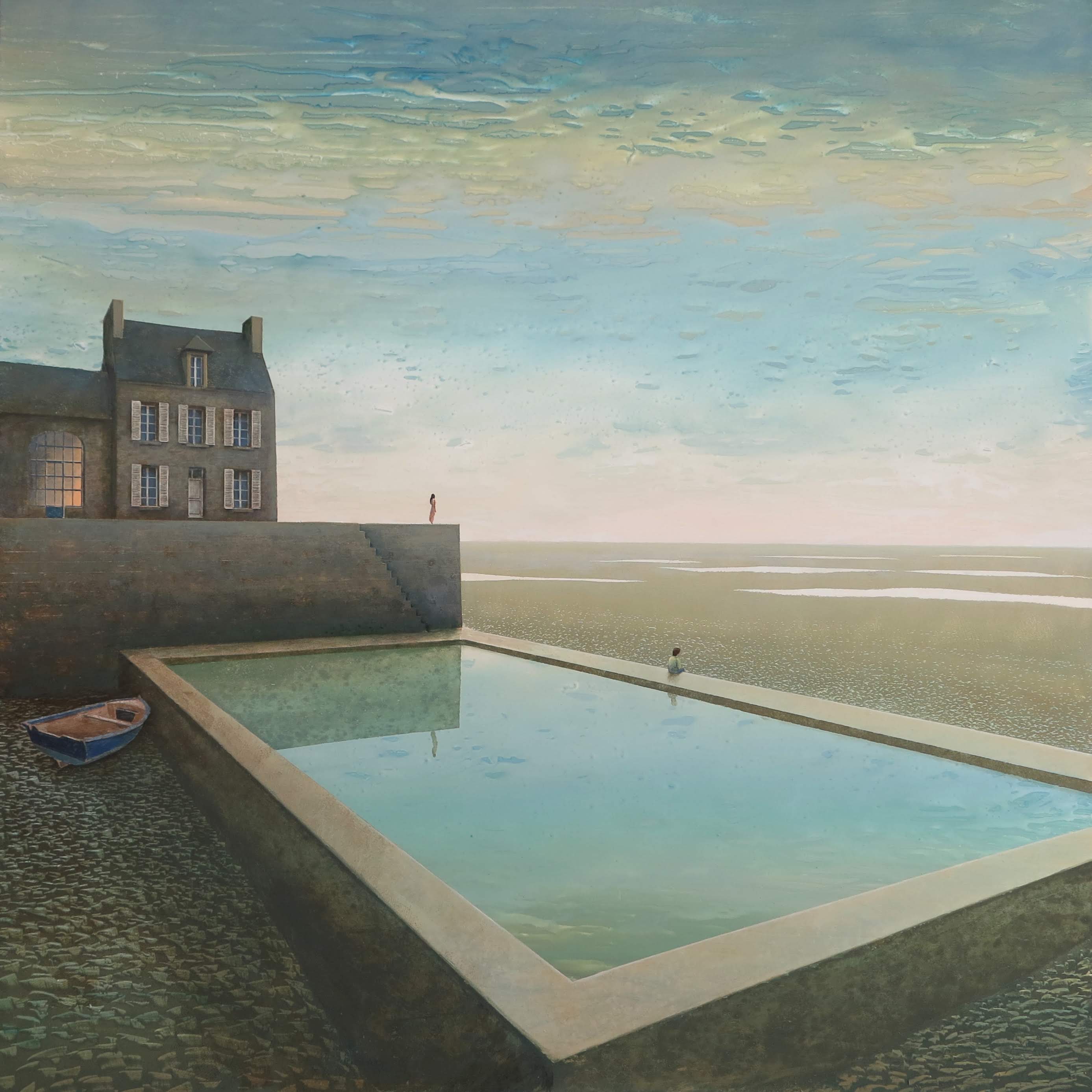
Philippe Charles Jacquet, 1957 | Surrealist painter
Born in Paris, Philippe Charles Jacquet was trained as an architect at the Ecole Nationale Supérieure des Arts Décoratifs.
After pursuing a 20 year long career in architecture, he decided to dedicate himself solely to painting in 2000.
His painting technique is entirely self-taught.
The level of precision and detail in his work speaks to his architectural background while the atmosphere embodied in his paintings is a complete manifestation of his own imagination.

Sir Joshua Reynolds PRA | Presidente fondatore della Royal Academy of Art
Reynolds, Sir Joshua - Pittore inglese (Plyche mpton, Devonshire, 1723 - Londra 1792). Tra i più celebri ritrattisti inglesi del sec. 18°, la sua grande fortuna fu dovuta oltre che alle sue notevoli capacità innovative nell'ambito di questo genere anche alle sue qualità sociali che lo resero caro non solo all'aristocrazia, ma anche a pensatori e scrittori dell'epoca.
Nella formazione del suo stile, fortemente personale, si combinarono influssi diversi: elementi dei Veneziani, dei Bolognesi, del tardo Rembrandt e di Rubens si aggiunsero a quelli che egli aveva ricevuto dal Hudson e dal Gandy.
La sua pittura rivela un graduale sviluppo dal semplice ritratto obiettivo, secondo la tradizione di Lely, Kneller e Hudson, verso uno stile più ambizioso ed immaginativo, nel quale i modelli vengono rappresentati come personaggi mitologici o fantastici concepiti drammaticamente.
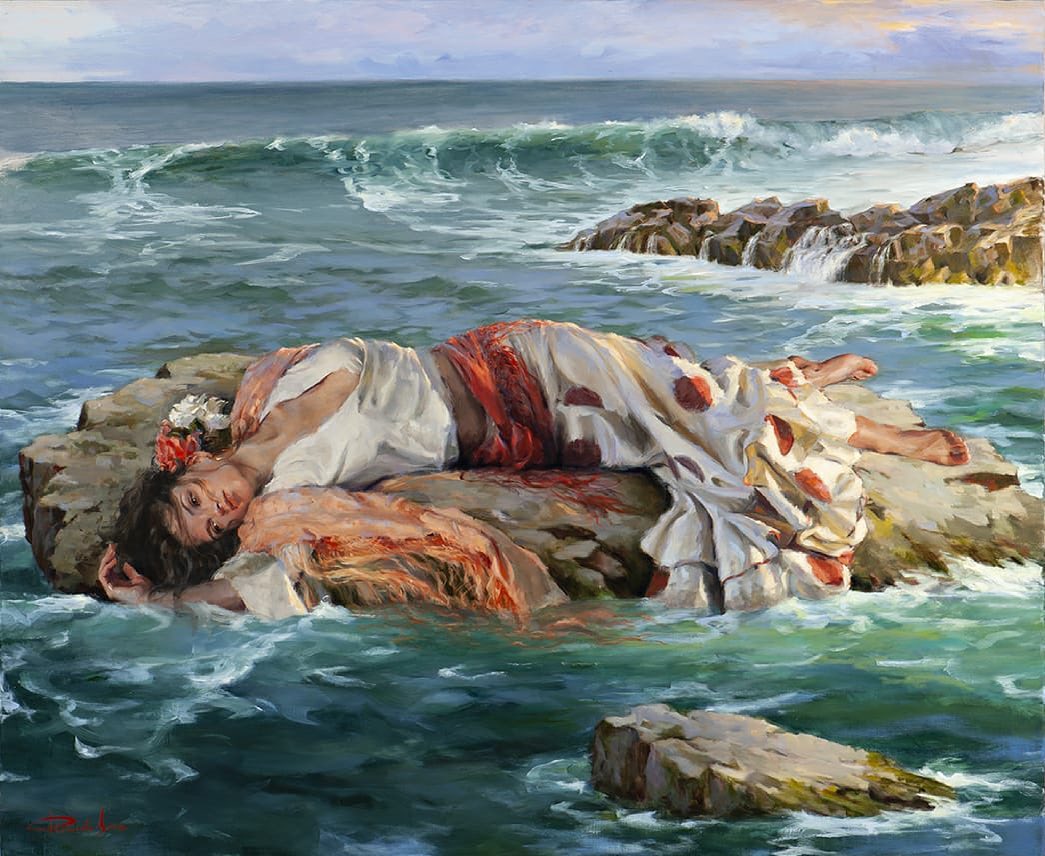
Nazim Hikmet | Il più bello dei mari / The most beautiful sea, 1942
Il più bello dei mari
è quello che non navigammo.
Il più bello dei nostri figli
non è ancora cresciuto.
I più belli dei nostri giorni
non li abbiamo ancora vissuti.
Ricardo Sanz | Carmen y el mar

Victor Brauner | Pittore / scultore surrealista
Victor Brauner (1903-1966) è stato un pittore e scultore Rumeno.
Pittore Dadaista poi Surrealista, ha fatto parte, come Constantin Brâncuși, Eugène Ionesco, Mircea Eliade, Panaït Istrati e Emil Cioran, dell'importante comunità di artisti ed intellettuali rumeni di Parigi.
Ha studiato alla scuola di Belle Arti di Bucarest dal 1919-1921.
Nell'ottobre 1924 espose per la prima volta le sue opere in una galleria, nello stesso anno pubblicò con Ilarie Voronca il primo e unico numero della rivista "75 H.P." da loro stessi fondata, nella quale è contenuto il manifesto della "picto-poésie": non solamente pittura, né solamente poesia, la "picto-poesia" contrappone forme geometriche differenziate dal colore e dal tocco del pennello, sulle quali vengono scritte parole a mano od a stampa, formando, secondo lo spirito che l'anima, sia futurista, o dadaista, o costruttivista, un vocabolario i cui significati non hanno senso che per il loro "scritto" sulla tela e sottolineano l'espressione dinamica dell'immagine.

Elio Ferrara, 1945
Elio Ferrara nasce a Napoli e frequenta l'Accademia di Belle Arti per poi lavorare come scenografo al teatro San Carlo ed al teatro San Ferdinando con Eduardo De Filippo, in seguito collabora con la RAI ed altre emittenti televisive.
La sua produzione pittorica è conosciuta al livello mondiale, egli ha un buon mercato in America, Germania, Francia, Brasile; inoltre è presente in molte collezioni pubbliche e private, ambasciate, pinacoteche, in collezioni di famosi artisti, politici e noti professionisti.
L'artista ha importanti predecessori nella sua parentela, come il poeta dell’800 Alberto Ferrara, autore di canzoni napoletane immortali, l'attore Franco Sportelli, Giuseppina Goglia sorella della mamma paterna e nipote di Filippo Palizzi.
La Goglia fu raffinata pittrice, direttrice del museo di Cerreto Sannita, insegnate di corte di Maria Josè Del Belgio, ancora oggi è apprezzata e presente in importanti vendite all'asta e vari musei nel mondo.

Pablo Picasso: "The purpose of art is washing the dust of daily life off our souls"!
• "Painting is a blind man’s profession. He paints not what he sees, but what he feels, what he tells himself about what he has seen".
• "La pittura è un mestiere da cieco. Non dipinge ciò che vede, ma ciò che sente, ciò che racconta a se stesso di ciò che ha visto".
• "Dio in realtà non è che un altro artista. Egli ha inventato la giraffa, l'elefante e il gatto. Non ha un vero stile: non fa altro che provare cose diverse. Dio, quell'altro artigiano".
• "Dipingere non è un'operazione estetica: è una forma di magia intesa a compiere un'opera di mediazione fra questo mondo estraneo ed ostile e noi".

Nazim Hikmet | Alla vita / On Living
La vita non è uno scherzo.
Prendila sul serio
come fa lo scoiattolo, ad esempio,
senza aspettarti nulla
dal di fuori o nell'aldilà.
Non avrai altro da fare che vivere.
La vita non è uno scherzo.
Prendila sul serio
ma sul serio a tal punto
Rene Magritte | La Reconnaissance Infinie, 1961

Hugues Merle | Pittore di genere
French painter Hugues Merle (1823-1881) has long been associated with his friend and possible rival, William Bouguereau.
Merle was just two years older than Bouguereau, and their thematic and artistic concerns and meticulous degree of finish resulted in comparison from critics and collectors alike.
Merle began exhibiting at the Salon des Artistes Français in 1847 and went on to become to teacher of Elizabeth Gardner Bouguereau, Bouguereau's wife and a talented painter in her own right.

Franz Kafka | "Il male conosce il bene, ma il bene non conosce il male"!
Che cos'è l'amore?
È semplicissimo!
L'amore è tutto ciò che eleva,
amplia e arricchisce la nostra vita.
Ci spinge verso le vette più alte e gli abissi più profondi.
L'amore quindi è privo di problemi quanto un veicolo.
Sono problematici solo il volante,
i passeggeri e la strada.
Tishk Barzanji - Provoke

Marie Spartali Stillman | Pre-Raphaelite painter
From Christie's:
Marie Spartali Stillman was both a gifted artist and a major Pre-Raphaelite muse, who features as a model in many of the movement's most memorable works.
Stillman was the youngest daughter of wealthy Greek parents.
Her father, Michael Spartali, had made his money as a cotton merchant and served as Greek consul-general in London between 1866-1882.
The Spartali family were prominent members of the cultured and affluent Anglo-Greek community that came to have an enduring impact on the history of Victorian art; they included Burne-Jones' and Rossetti’s great patron Constantine Ionides and his family, as well as Maria Zambaco, Burne-Jones' model and mistress, and Aglaia Coronio, who sat for Rossetti.

Teodor Axentowicz | Pittore Accademico di genre
Teodor Axentowicz / armeno: Թեոդոր Աքսենտովիչ (1859-1938) è stato un pittore e professore universitario Polacco-Armeno.
Famoso artista del suo tempo, fu anche rettore dell'Accademia di Belle Arti di Cracovia. Come artista, Axentowicz era famoso per i suoi ritratti e le scene sottili della vita di Hutsul, ambientate nei Carpazi.
Axentowicz nacque il 13 maggio 1859 a Brașov, in Ungheria (ora Romania), da una famiglia di origine polacco-armeno. Nel 1893 a Chelsea, Londra, sposò Iza Henrietta Gielgud, zia di Val Gielgud e John Gielgud della dinastia teatrale. Un figlio, Filippo S.A.D. Axentowicz, nasce a Chelsea nel 1893.
Tra il 1879-1882 studiò all'Accademia di Belle Arti di Monaco.

Vincent van Gogh | Snow-Covered Field with a Harrow (after Millet), 1890
From: Van Gogh Museum, Amsterdam
After a long period of psychological crisis, Van Gogh had lost his confidence in himself, as a person and as a painter.
For a long time, he felt useless and did not even dare to go outside.
To build up his self-confidence again, he started copying prints - a common exercise for beginning painters.
This painting is a copy of a print by Jean-François Millet (1814-1875).

Claude Monet | Color Quotes
"The point is to know how to use the colors, the choice of which is, when all’s said and done, a matter of habit".
"Color is my day-long obsession, joy and torment".
"Il colore è la mia ossessione, gioia e tormento per tutto il giorno".
"I haven’t yet managed to capture the color of this landscape; there are moments when I’m appalled at the colors I’m having to use, I’m afraid what I’m doing is just dreadful and yet I really am understating it; the light is simply terrifying".

Paul Gauguin su van Gogh: "Oh! sì, l'ha amato il giallo il buon Vincent.."
da Paul Gauguin - Gli scritti di un selvaggio, 1894
(due anni dopo la morte di Vincent van Gogh)
- "Fu ad Arles, dopo richieste insistenti, che andai a trovare Vincent Van Gogh.
Voleva fondare "L’Atelier du Midi" che io avrei dovuto dirigere.
Questo povero olandese era entusiasta e in preda a una singolare eccitazione.
Leggendo "Tartarin de Tarascon" sognava un mezzogiorno straordinario da dipingere in getti di luce. E sulla tela i suoi gialli violenti inondavano di sole le fattorie e tutta la pianura della Camargue.
...Nella mia stanza gialla alcuni fiori solari e dagli occhi porpora spiccano su di un fondo giallo. Bagnano le radici in una brocca gialla, sopra un tavolo giallo.
In un angolo del quadro la firma: Vincent.
E il sole giallo, attraverso la tenda gialla della mia stanza, inonda di oro questa festa floreale; al mattino dal mio letto, quando mi sveglio, quasi ne sento il profumo.
Paul Gauguin - Van Gogh mentre dipinge girasoli, 1888
Iscriviti a:
Post (Atom)

